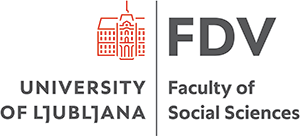As in other countries, with the rise of internet web surveying also quickly spread in Slovenia. In the first phase-type WWS 1.0 surveys were made by individual programmers.
In the sense of WWS 2.0 two early and innovative projects of complex and powerful tools for web surveying should be highlighted:
- In cooperation with CMI FDV company, CATI (today Valicon.si) developed one of the most sophisticated tools (AutoCATI) as early as 1996. This tool also received a big accolade at international conferences (Intercasic, San Antonio 1996). Valicon still develops this tool for its own use. It is used for the integration of web and telephone surveys and for the support of web panels (JazVem). It must be added that their tool is conceptually offline. That means that a survey is created on the users' computer and then uploaded online. This kind of approach has many advantages when creating longer and more complex questionnaires, but it also has some disadvantages;
- Very early, at the beginning of this decade, company RM Plus also created support for web (and also other modes) surveys. Their Warp-It tool was one of the most powerful tools that moved the whole process of creating and analysing online. It differs from AutoCATI by being completely online.
Other providers of web surveys in Slovenia usually purchase license software such as SawTooth (company Aragon). This is also usually the case for non-commercial users that mostly use Blaise (Statistic Office, Centre for Public Opinion Research FDV) or Global Park (FDV).
Smaller users approach the creation of web surveys in the following ways:
- Use of commercial web solutions that allow powerful web services for a couple of euros. These services can be free for smaller and simpler surveys. Examples of such tools include SurveyMonkey, Alchemer, QuestionPro, Crowdsignal, Wufoo, Typeform;
- Around the year 2008, a Slovenian commercial solution SweetSurveys became available. Later it stopped functioning;
- Global solutions are being translated into Slovenian more and more. It can be done with its own domain (eg. FluidSurveys, MySurvs) or as more or less (Google Translate) resourceful options of creating surveys in Slovenian;
- Use of open-source software. LimeSurvey is among more popular solutions;
- The creation of surveys with own programmers, which is especially common in the case of simpler surveys or voting where surveys must be integrated into the website. The use of flash is becoming more common;
- Ordering surveys at programming houses or companies that create websites and web applications. They may not have developed specialised platforms and create surveys as a new or a standalone solution. This can be very expensive;
- Ordering web surveys at individual software specialists that have created shells (WWS 1.0) on the basis of which complex surveys can be made relatively quickly.



